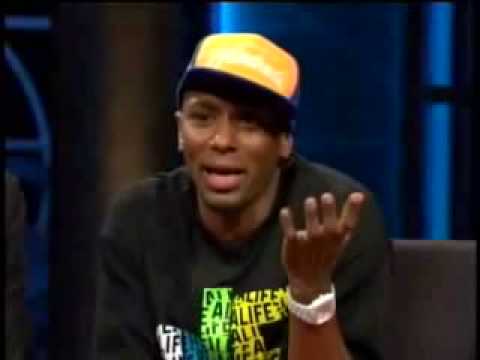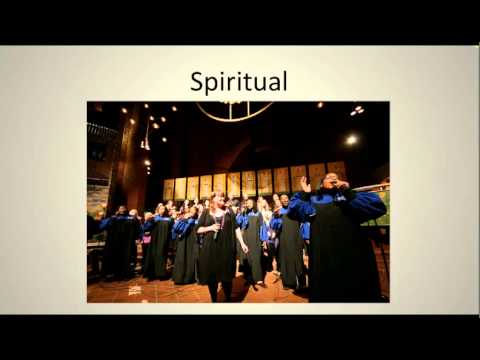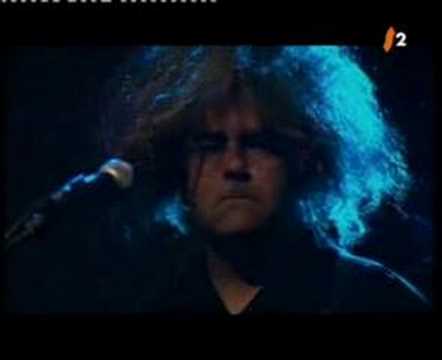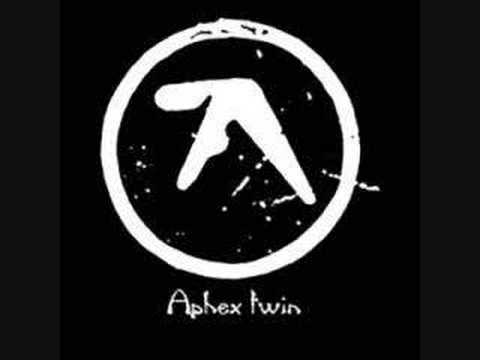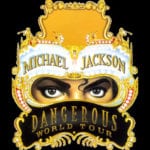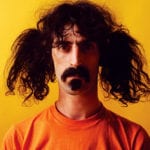Description: Political hip hop (also political rap) is a sub-genre of hip hop music that developed in the 1980s. Inspired by 1970s political preachers such as The Last Poets and Gil Scott-Heron, Public Enemy were the first political hip hop group. Grandmaster Flash and the Furious Five released the first well-known sociopolitical rap song in 1982 called “The Message”, which inspired numerous rappers to address social and political subjects. Why it is Extreme: Political hip hop might not be extreme in every sense of the word but nowadays artists such as Immortal Technique, Dead Prez and Looptroop rockers use their music to promote and sometimes encourage themes such a socialism, anarchy, conspiracy theories, black power and even presidential assassination. This genre should never be compared to the average rap song played on the radio, in fact almost all Political hip hop artist express extreme dislike towards mass produced and highly commercialized artists, an example of this is a passage from the song “The Message and the Money” by Immortal Technique, “To all these saronayas who are too lazy to come up with a way to sell records…that they keep recycling marketing schemes and imagery, C’mon there is a market for everything, there is a market for pet psychologists, twisted shitfetish videos, nipple rings, river dancing, for chocolate covered roaches but you can’t find one for cultured hardcore reality and hip hop?” Related Genres: Black Nationalist hip hop, Marxist hip hop, Anarchist hip hop, Socialism hip hop Artists: Nas, Mos Def, Dead Prez, Looptroop rockers, Immortal Technique, Blue Scholars, Sun Rise Above
Description: A body of singers who perform together is called a choir or chorus. The former term is very often applied to groups affiliated with a church and the second to groups that perform in theaters or concert halls. All members come together with what is called “one voice.” One person who makes a mistake can throw off the entire group and a mistake made by by a single person means the entire group makes the mistake. The spotlight is on the choir, therefore it is of extreme importance to perform well for the audience (in a concert) or congregation (in a church). In typical 18th to 20th century oratorios and masses, chorus or choir is usually understood to imply more than one singer per part, in contrast to the quartet of soloists also featured in these works. Why it is Extreme: Simply the fact that the smallest mistake made by one person could ruin the performance of all other members (anywhere from 20 to 300) makes this genre more extreme than others, where a mistake could be covered up by other members. Another extreme factor is the absence of any kind of time-keeping device such as a metronome, drums or even a finger snap. Choirs also have a very precise structure that needs to be followed to assure a proper sounding harmony, similar to an orchestra where all instruments have an assigned position and tuning. Related Genres: Symphonic choirs, Vocal jazz choirs, classical, orchestral
Description: Chill out (sometimes also chillout, chill-out, or simply chill) emerged in the early and mid-1990s as a catch-all term for various styles of relatively mellow, slow-tempo music made by contemporary producers in the electronic music scene. Sometimes the Easy Listening sub-genre Lounge is considered to belong to the chill-out collection. The term “Chill out music”, as well as the genre itself, originated in chill rooms that were set up by DJs off to the edge of club dance floors to give patrons a chance to take a break from the hectic dance vibe and chill out with this style of music. Chill out as a musical genre or descriptive is synonymous with the more recently popularized terms “smooth electronica” and “soft techno” and is a loose genre of music blurring into several other very distinct styles of electronic and lo-fi music. Why it is Extreme: Perhaps “Complete Ambiance” is a more appropriate title for this genre as anything that relaxes can be considered chill and each person has their own preferences. This genre is a very specific sub genre of electronic music with characteristics including downtempo, synthetic ambiance, deep bass lines, oceanwave-like rhythm and sound effects such as bells, xylophone, synthetic pings and strictly no vocals (Non-Voc). It might sound like there is nothing extreme about this genre but some songs can last more than 15 minutes and sometimes people have trouble concentrating and staying awake through a whole song due to it’s very affective soothing ability. Chill out rooms at dance clubs fill a safety need for users of Ecstasy, because some songs were so affective that it would put the user in such a deep trance causing them to forget to breath. In 1992 a UK rule required dance clubs to provide free water in response to a number of Ecstasy-related injuries and deaths. Related Genres: Ambient, Trip-Hop, Nu Jazz, New Age, Downtempo, Lounge, Psybient Artists: Portishead, Afterlife, Lux, Massive Attack, Boards of Canada
Description: Indian classical music has its origins as a meditation tool for attaining self realization. All different forms of these melodies (ragas) are believed to affect various “chakras” (energy centers, or “moods”). However, there is little mention of these esoteric beliefs in Bharat’s Natyashastra, the first treatise laying down the fundamental principles of drama, dance and music. Indian classical music has one of the most complex and complete musical systems ever developed. Like Western classical music, it divides the octave into 12 semitones however, it uses the just intonation tuning (unlike most modern Western classical music, which uses the equal-temperament tuning system). Why it is Extreme: I think the only way to explain why this genre is so extreme is to give the definition of a R?ga. R?ga refers to melodic modes used in Indian classical music. It is a series of five or more musical notes upon which a melody is made. In the Indian musical tradition, r?gas are associated with different times of the day, or with seasons. Indian classical music is always set in a r?ga. That means that a different song is played depending on which season, day and time it is. Another extreme factor is the use of instruments which include the sitar, a 16 stringed guitar requiring a lifetime of practice to play properly.
Description: Death metal (the modern or “american” death metal not the original 80’s and 90’s death metal) is an extreme subgenre of heavy metal. It typically employs heavily distorted guitars, deep growling vocals, blast beat drumming, and complex song structures with multiple tempo changes. Building off the speed and complexity of thrash metal, death metal emerged during the mid 1980s. It was mainly inspired by thrash metal acts like Slayer, Kreator and Celtic Frost. Along with the band Death and its frontman Chuck Schuldiner (who is often referred to as “the father of death metal”), bands like Possessed and Morbid Angel are often considered pioneers of the genre. In the late 1980s and early 1990s, death metal gained more media attention as popular record labels like Earache Records and Roadrunner Records began to sign death metal bands at a rapid rate. Since then, death metal has diversified, spawning a rich variety of subgenres. Why it is Extreme: Lyrical themes include death, murder, rape, mutilation, dominance, rage, hatred, torture etc. The lower the vocals, guitars and bass are tuned the better. Related Genres: Mathcore, Deathcore, Black Metal, Grindcore, Doom Metal, Speed Metal Artists (Modern death metal only): Oceano, Suicide Silence, Waking the Cadaver, Ion Dissonance, Suffokate, Annotations of an Autopsy, Winds of Plague, Emmure, Rose Funeral
Description: Speed metal is a sub-genre of heavy metal music originating in the early 1980s. It is described as “extremely fast, abrasive, and technically demanding” music. Also according to Allmusic.com, speed metal eventually toned down its intense tempos and evolved into thrash metal. Why it is Extreme: Cybergrind is not technically a recognized genre though some bands use it as a descriptive genre. So to make things easier i used the closest thing, Speed Metal, as an example. Cybergrind is sort of a blend between Speed Metal and Hardcore (#4 on this list). If Death Metal is too much for you then this will definitely not sooth your musical taste buds, it is quite extreme. Related Genres: Speed Metal, Death Metal, Mathcore Artists: The Berzerker, Abramelin, Plague, Disembowelment
Description: Hardcore is a style of electronic music that originated in the early-to-mid-1990s in multiple locations including the Netherlands, Germany, Italy, Belgium and the UK. The style is typified by a fast tempo, and the rhythmic use of distorted and atonal industrial-like beats and samples. As hardcore continues to grow, each different type of hardcore (each subgenre) begins to attract a larger fan base and more support from producers. As new subgenres grow they can become extremely different than other subgenres that are also referred to as “Hardcore.” Why it is extreme: Hardcore subsequently is an extreme form of techno, house and trance music, it follows the basic guidelines with a constant beat and laud synthetic sirens and other sound effects. Related Genres: Gabber, Speedcore, Terrorcore, Breakcore, Noisecore, Doomcore Artists: Neophyte, Angerfist, Delta 9, Gammer, Nasenbluten
Description: Avant-garde metal, experimental metal, or art metal is a subgenre of heavy metal music characterised by the use of innovative, avant-garde elements, large-scale experimentation, and the use of non-standard sounds, instruments, and song structures. The earliest avant-garde metal bands include Celtic Frost and Master’s Hammer. Many Avant-Garde metal bands can be found on North American label The End Records. The term avant-garde metal refers to bands and musicians who “incorporate new and innovative elements in metal, who break conventions, tear down walls, violate borders.” The genre has also been described as “the art of creating deep and strange atmospheres by experimenting with new instruments and sounds, strange vocals, unconventional song structures, rhythms and harmonies, unusual lyrics or uncommon artwork” or alternatively, “progressive, psychedelic, surrealistic, phantasmagoric, expressionistic, dissonant or extravagant interpretations of extreme metal.” Why it is Extreme: Almost everything we do in live is done to a certain beat or rhythm that only we can “feel”. When we walk, write, talk, read, breath and eat we do it to the same rhythm we have always felt and when that rhythm is interrupted we try to either adapt to the new beat or get back to the old one. Avant-garde metal bands will not allow you to get back to the previous beat, sudden changes in tempo, off beat and pulsating blast-beats and short bursts of highly distorted vocals create a confusing, complex and random wall of noise that strangely, makes sense. Related Genres: Post-metal, Drone metal, Mathcore Artists: Fantomas, Mr. Bungle, Mike Patton, Rahzel, Maldoror
Description: Perhaps the best-known musical form of the Mongols is the throat singing tradition known as hoomii, extant among all or most Mongols though best known internationally from Tuva. Sung differently than traditional vocals. In Mongolia, the most-famous throat-singers include Gereltsogt and Sundui, while the Tuvan group Huun-Huur-Tu has an international following. This unique type of singing involves the production of two distinctively audible pitches at the same time, including a low pedal note, or drone, derived from the fundamental frequency of the vocal cord vibrations, and higher melodic notes that result when the singer’s mouth acts as a filter, selecting one note at a time from among the drone’s natural overtone series pitches. Why it is Extreme: Singing itself is quite difficult for most people and throat singing is probably not something they would even consider. A throat singer can produce 2 to 4 notes at the same time, this gives the effect of a deep sound (bass) a medium sound (guitar) and a high pitch sound resembling a flute or whistle being played. This genre is definitely extreme, some songs can last 3 minutes and depending on how good the singer is could contain only 10 words (words are stretched and sometimes transition into “instrumentals”). Unfortunately the featured clip has an annoying high pitched sound in it but it should not due too much damage to the quality.
Description: Aphex Twin is not a genre of music but an artist, i decided to include him in this list because his music is truly unique. Aphex Twin, is a British electronic musician described by The Guardian newspaper as “the most inventive and influential figure in contemporary electronic music.” Why he is Extreme: I think anyone who has heard an Aphex Twin song knows that it is not ordinary, Twin produces songs that have incredible complexity, sound distortions, synthetic sound effects, maximum distorted voices and recordings and off to on beat changes. Related Genres: Electronic Related Artists: None
